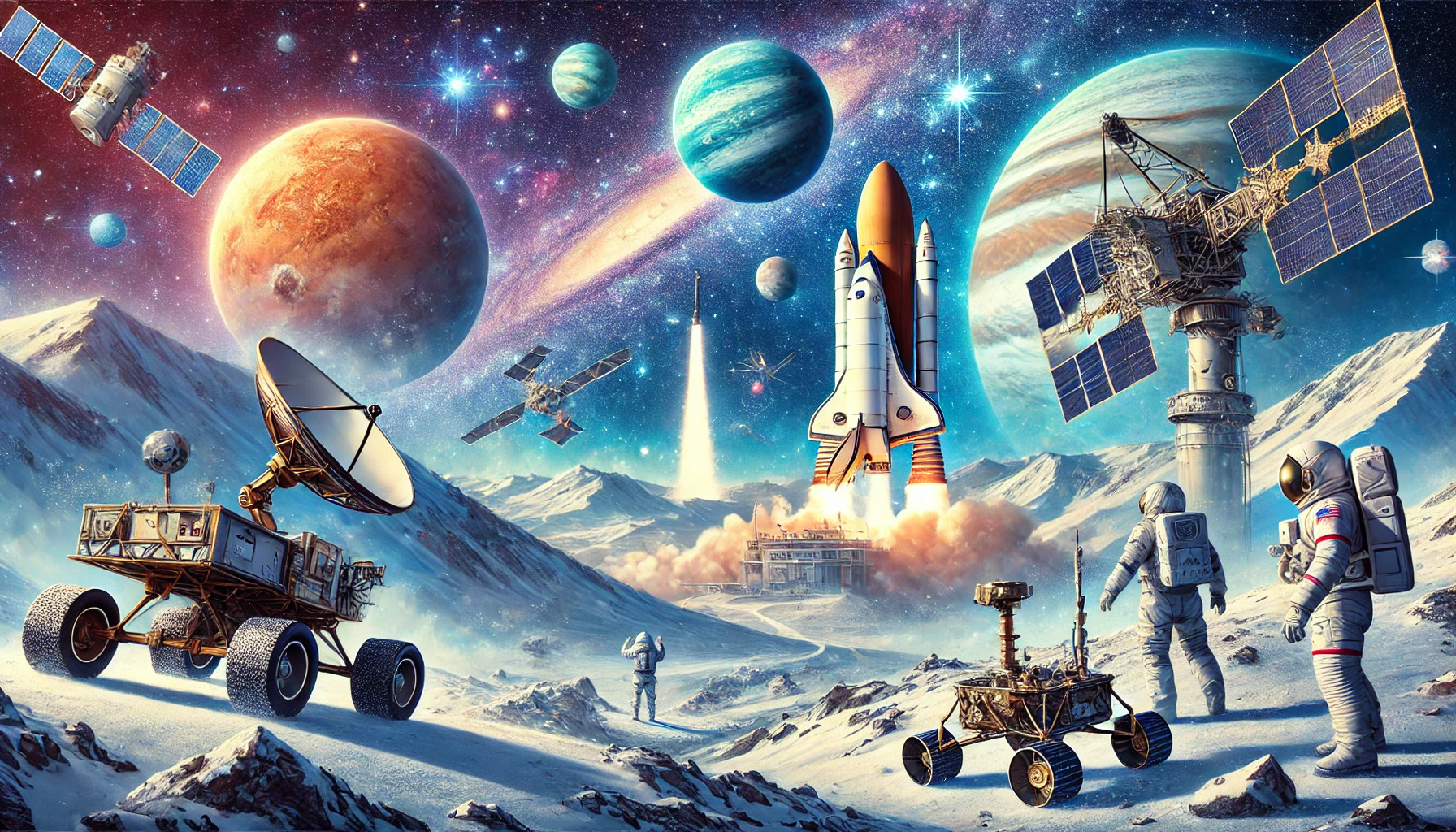Somewhere right now, a spacecraft is traveling thousands of miles per hour, carrying the next big discovery. Space agencies and private companies have lined up missions that could change what we know about our solar system and the possibility of life beyond Earth. These aren’t just routine trips. They’re designed to reach unexplored worlds, search for alien oceans, and even bring pieces of other planets back home.
With technology pushing boundaries, the next ten years will be filled with groundbreaking launches. From Mars to the farthest edges of our galaxy, here’s what to look forward to.
Moon Missions: Stepping Stones for Deep Space Travel
The Moon is about to get busier. Countries and companies are treating it as a launchpad for future Mars exploration and deep-space operations.
NASA’s Artemis Program
NASA is leading the charge with Artemis, a series of missions aiming to land astronauts on the Moon again. Unlike the Apollo missions, this isn’t just about planting flags and collecting rocks. The goal is to establish a long-term human presence.
- Artemis II will send astronauts around the Moon, testing spacecraft systems before actual landings.
- Artemis III will take humans back to the lunar surface, including the first woman and the first person of color to set foot on the Moon.
- Artemis IV and beyond will focus on building the Lunar Gateway, a space station orbiting the Moon that will serve as a base for future missions.
China’s Lunar Ambitions
China’s space program is expanding fast. The Chang’e missions have already sent rovers and landers to the Moon. The upcoming Chang’e 6 and 7 will explore the Moon’s south pole, an area believed to contain ice that could be turned into drinking water or rocket fuel.
Private Sector Involvement
Companies like SpaceX, Blue Origin, and Astrobotic are developing landers and cargo services to support lunar exploration. Their work could make Moon missions more affordable and frequent.
Mars: The Race to Find Signs of Life
If there’s any place in our solar system that once hosted life, it’s Mars. The next wave of missions is designed to answer lingering questions.
NASA’s Sample Return Mission
The Perseverance rover is already collecting rock samples. The next step is bringing them back to Earth. NASA and the European Space Agency (ESA) are planning a series of missions to retrieve these samples and analyze them in labs on Earth.
China’s Mars Sample Return
China is working on its own Mars sample return mission. If successful, it might even bring back material before NASA does, giving China a major scientific edge.
SpaceX’s Starship and the Human Push to Mars
SpaceX is building a spacecraft that could carry humans to Mars. Starship is designed to be reusable and powerful enough to transport supplies and astronauts for long-duration missions. If successful, it could pave the way for human settlements.
Missions to Icy Moons: Hunting for Alien Oceans
Several moons in our solar system have underground oceans, making them prime candidates for finding extraterrestrial life.
Europa Clipper
Jupiter’s moon Europa has a thick ice shell covering a massive ocean. NASA’s Europa Clipper will orbit Jupiter and fly past Europa multiple times, using radar to see beneath the ice and detect signs of life.
Dragonfly: A Drone for Titan
Saturn’s moon Titan is covered in lakes of liquid methane and ethane. NASA’s Dragonfly mission will send a drone-like lander to hop between different locations, analyzing Titan’s chemistry and searching for conditions that might support life.
Exploring the Asteroid Belt and Beyond
Psyche: Journey to a Metal World
NASA’s Psyche mission is heading to an asteroid that may be the exposed core of an ancient planet. If true, studying it could reveal how planets like Earth formed.
OSIRIS-APEX: Extending the Asteroid Study
After successfully bringing back samples from asteroid Bennu, NASA is sending the same spacecraft to another asteroid, Apophis. It will study how this asteroid changes after its close approach to Earth in 2029.
The Search for Habitable Exoplanets
Scientists have already discovered thousands of planets beyond our solar system. The next step is finding one that could actually support life.
James Webb Space Telescope’s Continued Work
The James Webb Space Telescope (JWST) has already given us stunning images and insights into distant planets. Over the next decade, it will examine atmospheres of exoplanets, looking for gases like oxygen and methane that could indicate life.
Nancy Grace Roman Space Telescope
This telescope will scan vast sections of the sky, searching for exoplanets and studying dark matter. Its findings could reshape our understanding of the universe.
The European Space Agency’s PLATO Mission
PLATO is designed to find Earth-like planets around Sun-like stars. Unlike previous missions, it will focus on planets that are in the habitable zone—the right distance from their star to have liquid water.
Deep Space Missions: Probing the Outer Edges of the Solar System
Voyager’s Successor: Interstellar Probe
NASA is considering a new mission to go beyond our solar system, following in the footsteps of the Voyager spacecraft. The goal is to study what lies outside the Sun’s influence, a region called the heliosphere.
New Horizons Extended Mission
After visiting Pluto and Arrokoth, New Horizons will continue exploring the outer solar system, possibly studying more Kuiper Belt objects.
Breakthrough Starshot: A Mission to Another Star
Scientists are working on a project to send tiny spacecraft to Proxima Centauri, the nearest star to Earth. These spacecraft would travel at a fraction of the speed of light, reaching the star in just a few decades instead of centuries.
Final Thoughts
The next decade will take space exploration to levels we’ve never seen before. Scientists and engineers are pushing limits, sending missions farther, faster, and with more advanced technology than ever. From the Moon to exoplanets, every launch will bring new discoveries and a better understanding of our place in the universe. Whether it’s uncovering secrets about Mars, probing alien oceans, or searching for habitable worlds, space exploration is entering an era that could change history.
